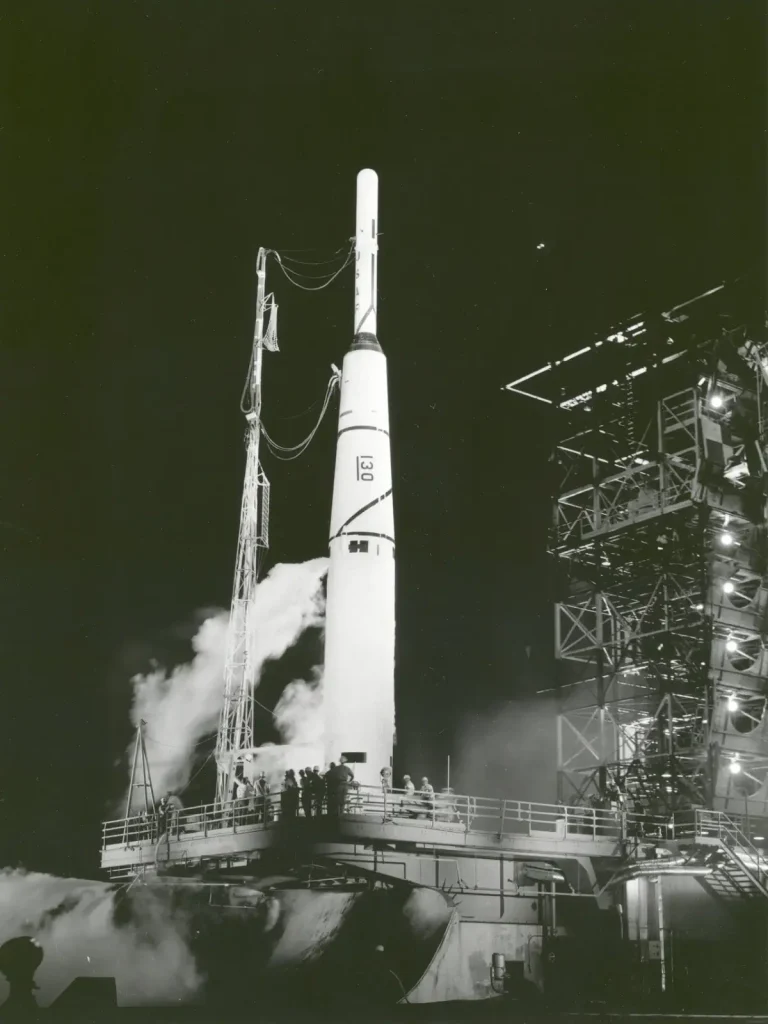On October 11, 1958, the newly-established space agency National Aeronautics and Space Administration (NASA) launched Pioneer 1 (also known as Able 2), a lunar probe intended to orbit the Moon. It was the first launch of NASA, which was formed on July 29, 1958.
Today’s (October 11) story of what happened this day in Science, Technology, Astronomy, and Space Exploration history.
Pioneer 1 (Able 2)
Able 2 (see notes 1), later named Pioneer 1, was the first spacecraft launched by NASA. It was launched on October 11, 1958. Due to a malfunction, the spacecraft never reached the Moon but did return data on the near-Earth environment.

Pioneer 1 was designed to record micrometeoroid impacts, take the magnetic field and radiation measurements, and obtain a “facsimile image of the surface of the Moon.”
During the launch, the Thor second stage shut down 10 seconds early due to incorrect information from an accelerometer measuring incremental velocity.
As a result, the launch vehicle had a very low velocity for the probe to escape Earth’s gravity. An attempt to insert the spacecraft into high Earth orbit at 79,970 x 20,000 miles (128,700 x 32,200 kilometers) by using its Thiokol-built retro motor failed because internal temperatures had fallen too low for the batteries to provide adequate power.
The probe did, however, reach an altitude of 71,303 miles (114,750 kilometers) and verified the existence of the Van Allen Belts (two zones of energetic charged particles, most of which originate from the solar wind, that are captured by and held around the Earth’s magnetosphere), and returned other valuable data on the boundary of the geomagnetic cavity.
The probe reentered Earth’s atmosphere about 43 hours after launch.
Investigators later concluded that an accelerometer had mistakenly cut off the Able stage because of an incorrect setting of a valve.
In a press release soon after the launch, the U.S. Department of Defense officially bestowed the name “Pioneer” to the probe, although it has often been retroactively known as Pioneer 1.
The name was apparently suggested not by any NASA official but by Stephen A. Saliga, an official in charge of Air Force exhibits at Wright-Patterson Air Force Base in Dayton, Ohio, who designed a display to coincide with the launch.

The cylinder in this photo was 74 cm (29 inches) in diameter and the height from the top of one cone to the top of the opposite cone was 76 cm (30 inches). The total mass of the Pioneer 1 probe after vernier separation was 34.2 kg (75 lb), after injection rocket firing it would have been 23.2 kg (51 lb).
October 11 in Science, Technology, Astronomy, and Space Exploration history
- 1968: Apollo 7 was launched.
- 1958: NASA’s first launch: Pioneer 1
Notes
- Launched on August 17, 1958, the Able 1 (later called Pioneer 0) was the first-ever launch to the Moon – and humanity’s first attempt to send a spacecraft anywhere beyond the Earth orbit. The plan was to orbit the Moon, but a malfunction doomed the spacecraft as the spacecraft’s booster rocket exploded 73.6 seconds after launch. The mission predated NASA by a few months and was launched by the U.S. Air Force.
- Sometimes called a research rocket, a sounding rocket is an instrument-carrying rocket designed to take measurements and perform scientific experiments during its sub-orbital flight. Their altitudes are generally between weather balloons and satellites.
Sources
- Pioneer 1 on the NASA Space Science Data Coordinated Archive website
- Able 2 (Pioneer 1) on the NASA Solar System Exploration website
- Pioneer 1 on Wikipedia
- Budget of NASA, Year by Year [1980-1989] - June 10, 2024
- Budget of NASA, Year by Year [1970-1979] - June 10, 2024
- Budget of NASA, Year by Year [1958-2024] - June 10, 2024
